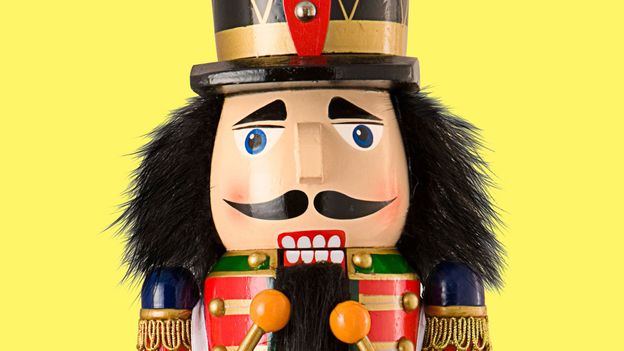The Evolution of Tchaikovsky's Nutcracker into a Christmas Classic
Core Concepts
The author explores the transformation of Tchaikovsky's Nutcracker into a beloved Christmas classic, delving into its universal appeal and enduring significance.
Abstract
Tchaikovsky's Nutcracker has evolved from a poorly received ballet to an iconic Christmas tradition worldwide. Despite initial criticism, the ballet's magical storyline and enchanting characters have captivated audiences for generations. The Nutcracker not only generates significant revenue for dance companies but also serves as an essential introduction to ballet for many young viewers, ensuring its lasting impact on the art form.
Customize Summary
Rewrite with AI
Generate Citations
Translate Source
To Another Language
Generate MindMap
from source content
Visit Source
www.bbc.com
How Tchaikovsky’s Nutcracker became a Christmas classic
Stats
"the show garners about 40% of the company’s ticket revenue each year"
"allegedly spend more than $8 billion per year on Christmas decorations"
Quotes
"It’s the eternal fantasy of Christmas come to life on stage." - Isabel McMeekan
"The Nutcracker is now a ritual in plenty of US cities where snow rarely falls." - Alastair Macaulay
Key Insights Distilled From
by at www.bbc.com 12-18-2015
https://www.bbc.com/culture/article/20151218-how-tchaikovskys-nutcracker-became-a-christmas-classic?utm_source=linnk.ai
Deeper Inquiries
How has The Nutcracker managed to transcend cultural boundaries and become a global phenomenon?
The Nutcracker has transcended cultural boundaries and become a global phenomenon due to its universal themes that resonate with audiences worldwide. By focusing on the magic of Christmas, family, toys, and fantasy rather than specific religious elements, the ballet appeals to people of various backgrounds. Additionally, the enchanting story combined with Tchaikovsky's beautiful score creates a captivating experience that transcends language barriers. The ballet's accessibility and ability to evoke feelings of nostalgia and wonder make it relatable and appealing to audiences across different cultures.
What are some potential drawbacks or criticisms of The Nutcracker as a holiday tradition?
Some potential drawbacks or criticisms of The Nutcracker as a holiday tradition include its commercialization leading to oversaturation during the festive season. As one of the most popular ballets performed annually by numerous companies, there is a risk of diluting its artistic value through repetitive productions solely for financial gain. Critics may argue that this focus on profit could compromise the integrity of performances and diminish the significance of this classic work in ballet repertoire. Furthermore, some may view The Nutcracker as perpetuating traditional gender roles through characters like Clara and the Sugar Plum Fairy.
How does the commercialization of The Nutcracker impact its artistic integrity and cultural significance?
The commercialization of The Nutcracker can impact its artistic integrity by prioritizing profitability over artistic merit. When productions focus more on ticket sales and revenue generation rather than delivering high-quality performances, there is a risk that artistic standards may be compromised. This emphasis on commercial success could lead to rushed or subpar interpretations lacking depth or innovation, potentially diminishing the overall cultural significance of The Nutcracker as an enduring masterpiece in classical ballet. Moreover, excessive merchandising or branding tied to The Nutcracker may detract from its original essence as an art form meant to inspire creativity and emotional connection among audiences.
0
